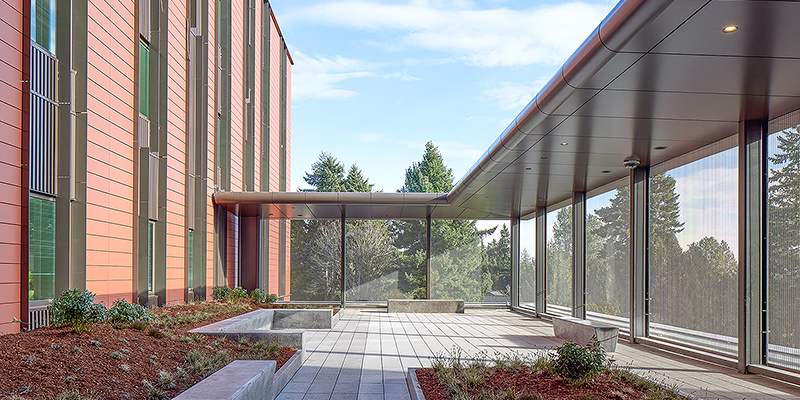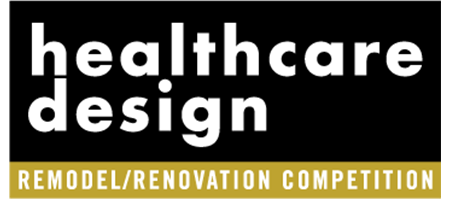Pandemic-level illness, a nation-wide mental health crisis, and healthcare worker burnout are fueling a reimagined future for America’s healthcare infrastructure. As the demand for innovative hospitals, behavioral health centers, and ambulatory clinics continues to rise, woven metal fabric is an attractive, resilient, and dynamic material that can be used to construct positive patient experiences and environments that support both physical and mental healing.
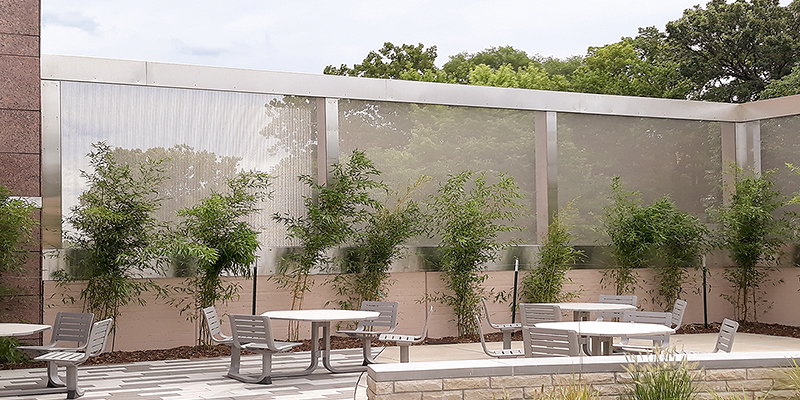
Within outdoor and mid-door spaces, metal fabric enables airflow while maintaining safety as railing infill or fall protection along rooftop perimeters. Image courtesy of GKD-USA
Why metal fabric?
Many architectural materials have a place in healthcare design but must meet stringent performance standards before they are deemed appropriate for these round-the-clock, year-round demanding environments. Aside from inherent durability characteristics, metal fabric offers a myriad of benefits once put in application.
- Space that uses a versatile material like metal fabric that is conducive to a seamless blending of indoor/outdoor, increases occupant connectivity to the environment. Metal fabric enables airflow while maintaining safety as railing infill or fall protection along rooftop perimeters.
- Metal fabrics are engineered to withstand prolonged tension, fire, heat, impact, and heavy loads.
- A metal fabric façade connects indoor occupants with outdoor spaces. Basking in natural light syncs circadian rhythms which result in better quality sleep, the number one predictor of health outcomes.
- They also allow biophilic benefits fundamental to human performance such as daylight, ventilation, and naturally filtered and humidified air. Biophilic elements have been found to support cognitive function, physical health, and psychological well-being.
Whether it’s specified to enhance energy efficiency, support occupant safety and well-being, or expand the building footprint through enclosed mid-door and rooftop spaces, metal fabric is one material that can provide design and performance consistency in almost every area of a commercial building.
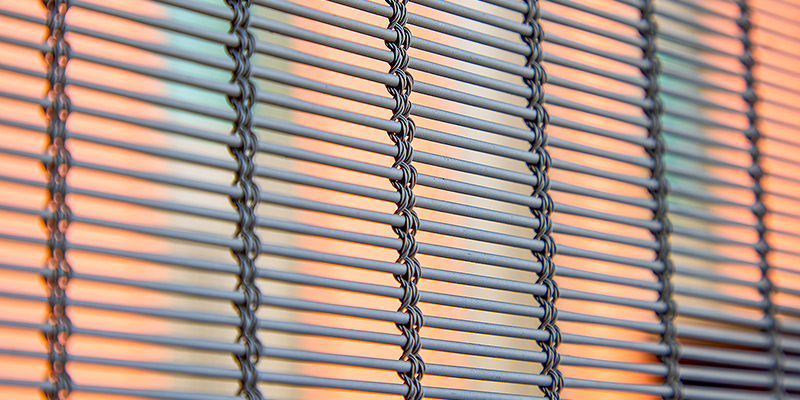
Mesh can be designed for individual environments with variables including the strength of the material, weave design and opening size. Image courtesy of GKD-USA
Safe materials for safe spaces
Psychiatric healthcare facilities, whether new or existing, are required to meet comprehensive accreditation standards to ensure that the risks to patient safety are minimized. Principles that support patient safety strategies avoid systems, assemblies and materials that can be weaponized, yield sharp edges, or provide ligature points in all locations accessible to patients.
- Highly durable stainless steel addresses behavioral health settings where design against impact loading is required. The material can be designed to resist the impact of furniture or other objects being thrown at it, or an adult person running into it at full speed.
- The weaves specified for behavioral health feature very small openings – too small for fingers to gain purchase, giving it anti-climb properties. It also presents anti-ligature defense which is a safety measure that prevents people from using objects that are bound or tied together to harm themselves or others.
- Despite its strength, the material is still visually transparent so patients can still enjoy views to the outside.
- Patients can also enjoy sunlight and fresh air when in a space enclosed by metal fabric – biophilic elements that are important to stress relief and healing.
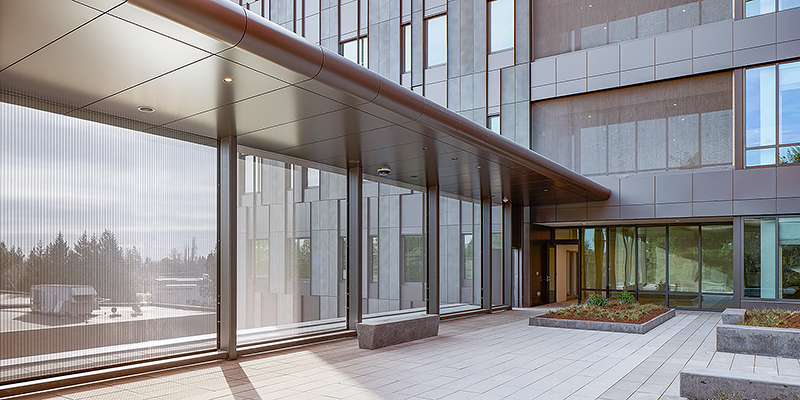
Spaces that use a versatile material like metal fabric increase the occupants’ connectivity to the environment. Image courtesy of GKD-USA
Case Study: University of Washington Behavioral Health Center
Metal fabric has proven it can hold up to these special healthcare circumstances. The University of Washington Behavioral Health Center is a fully integrated healing environment designed for individuals struggling with serious physical and behavioral health problems.
With a mission to heal and uplift, the university sought to imbue its Behavioral Health Center with a pleasing aesthetic that fits within its campus context and pays special attention to safety and patient wellbeing.
Architecture firm SRG Partnership took on the project, focused on the owner’s goal to maximize inpatient safety and minimize the chances of self-inflicted injury. The firm had used metal fabric on previous projects and saw a strong potential application for the material to support beautification and wellbeing.
Using a weave with minimal open space, metal fabric created biophilic security screening for patients in a courtyard terrace. The weave features a cluster of four cable wires woven onto a rounded weft (horizontal) rod. The product provides a blend of transparency and density while eliminating gaps or voids between the mesh material, reducing the risk of stuck fingers, ligature, material sabotage, and damage from human interaction. At the same time, the weave is 44% transparent, meaning ventilation and much-needed sunlight and views of the surrounding trees and greenery are uninhibited. Patients can absorb all the benefits of fresh air and sunlight and connect to nature while also being safe and secure – without feeling imprisoned.
![]()

